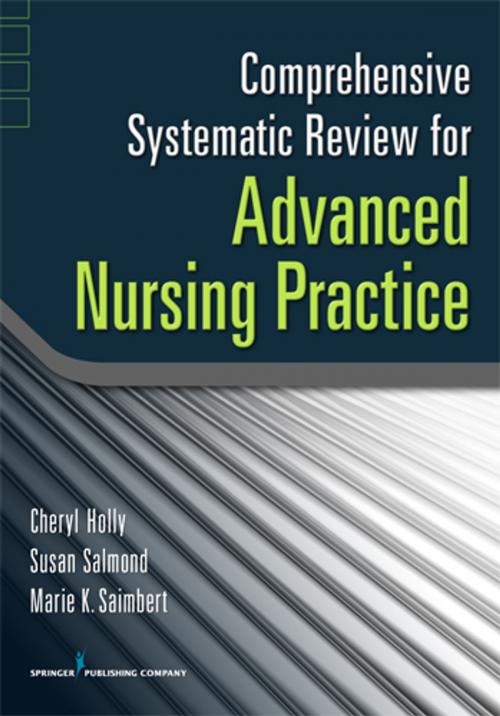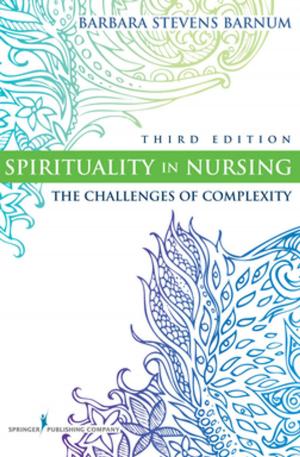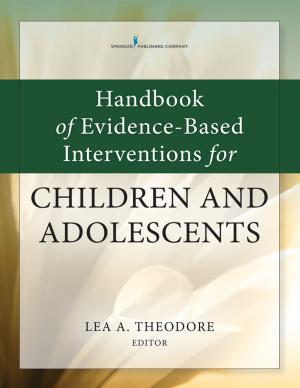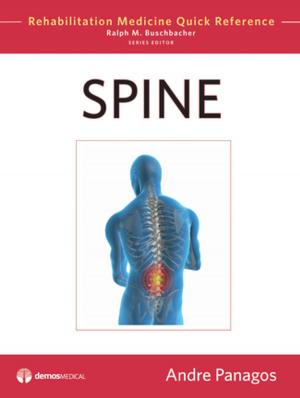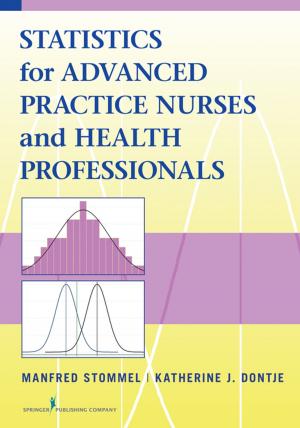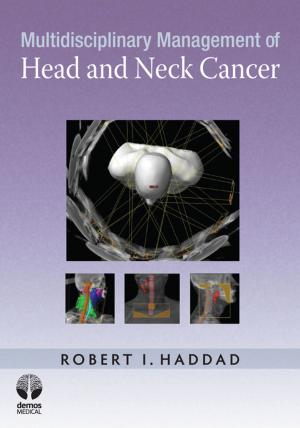Comprehensive Systematic Review for Advanced Nursing Practice
Nonfiction, Health & Well Being, Medical, Nursing, Research & Theory| Author: | ISBN: | 9780826117793 | |
| Publisher: | Springer Publishing Company | Publication: | September 12, 2011 |
| Imprint: | Springer Publishing Company | Language: | English |
| Author: | |
| ISBN: | 9780826117793 |
| Publisher: | Springer Publishing Company |
| Publication: | September 12, 2011 |
| Imprint: | Springer Publishing Company |
| Language: | English |
Named a 2013 Doody's Core Title!
2012 Second Place AJN Book of the Year Award Winner in Advanced Practice Nursing!
ìThis book comprehensively and concisely examines the complexities related to asking clinical questions, searching for the evidence, appraising and summarizing the evidence, and getting evidence into practiceÖ I commend this book to health professionals who are seeking to do the best they can in health care.î
--Alan Pearson, AM
The Joanna Briggs Institute
Faculty of Health Sciences, University of Adelaide
In an age of rapidly expanding knowledge, it is crucial for health professionals to stay abreast of the most current evidence-based information when making clinical decisions. This textbook is specifically designed to meet the objectives of the Doctor of Nursing Practice (DNP) competency that relates to ìClinical Scholarship and Analytical Methods for Evidence-Based Practice.î It provides the knowledge and skills necessary for DNP students, faculty and advanced practice nurses to conduct a comprehensive systematic review (CSR). The text sets forth a rigorous, step-by-step approach to the process of conducting a literature search, including both quantitative and qualitative studies, as well as ìgreyî literature. It describes how to extract and synthesize the most relevant data, how to integrate systematic reviews into practice, and how to disseminate the results.
The volume begins by addressing the basic concepts of systematic reviews and their relationship to clinical practice and policy, before delineating the systematic steps of this process along with the development of a systematic review proposal and clinical question. The book then describes how to find and select the best available evidence and explores specific types of systematic reviews, including experimental, observational, and economic evidence, and explores the current and future use of the process. End-of-chapter application exercises, questions for review, objectives, summary points, and references facilitate learning. Mastery of the CSR process and application of the resultant evidential summaries will be of utmost benefit to nursing practitioners seeking to provide care according to the most current evidence-based knowledge.
Key Features:
- Tailored specifically for graduate nursing courses in evidence-based practice
- Describes how to find and appraise relevant studies, including nonpublished ìgreyî literature and offers criteria for selecting or excluding studies
- Guides readers through the process of searching the literature for evidence based on the review question
- Explains how to integrate systematic review outcomes into practice
- Compares CSR methods, review of literature, integrated review, and meta-studies
Named a 2013 Doody's Core Title!
2012 Second Place AJN Book of the Year Award Winner in Advanced Practice Nursing!
ìThis book comprehensively and concisely examines the complexities related to asking clinical questions, searching for the evidence, appraising and summarizing the evidence, and getting evidence into practiceÖ I commend this book to health professionals who are seeking to do the best they can in health care.î
--Alan Pearson, AM
The Joanna Briggs Institute
Faculty of Health Sciences, University of Adelaide
In an age of rapidly expanding knowledge, it is crucial for health professionals to stay abreast of the most current evidence-based information when making clinical decisions. This textbook is specifically designed to meet the objectives of the Doctor of Nursing Practice (DNP) competency that relates to ìClinical Scholarship and Analytical Methods for Evidence-Based Practice.î It provides the knowledge and skills necessary for DNP students, faculty and advanced practice nurses to conduct a comprehensive systematic review (CSR). The text sets forth a rigorous, step-by-step approach to the process of conducting a literature search, including both quantitative and qualitative studies, as well as ìgreyî literature. It describes how to extract and synthesize the most relevant data, how to integrate systematic reviews into practice, and how to disseminate the results.
The volume begins by addressing the basic concepts of systematic reviews and their relationship to clinical practice and policy, before delineating the systematic steps of this process along with the development of a systematic review proposal and clinical question. The book then describes how to find and select the best available evidence and explores specific types of systematic reviews, including experimental, observational, and economic evidence, and explores the current and future use of the process. End-of-chapter application exercises, questions for review, objectives, summary points, and references facilitate learning. Mastery of the CSR process and application of the resultant evidential summaries will be of utmost benefit to nursing practitioners seeking to provide care according to the most current evidence-based knowledge.
Key Features:
- Tailored specifically for graduate nursing courses in evidence-based practice
- Describes how to find and appraise relevant studies, including nonpublished ìgreyî literature and offers criteria for selecting or excluding studies
- Guides readers through the process of searching the literature for evidence based on the review question
- Explains how to integrate systematic review outcomes into practice
- Compares CSR methods, review of literature, integrated review, and meta-studies
